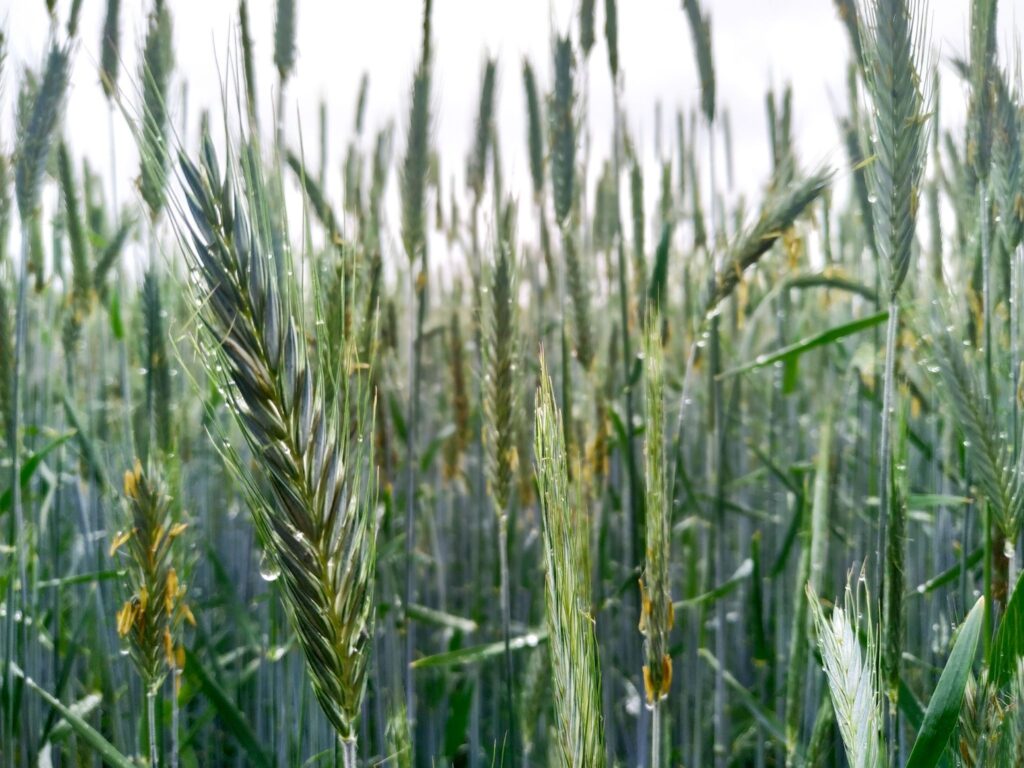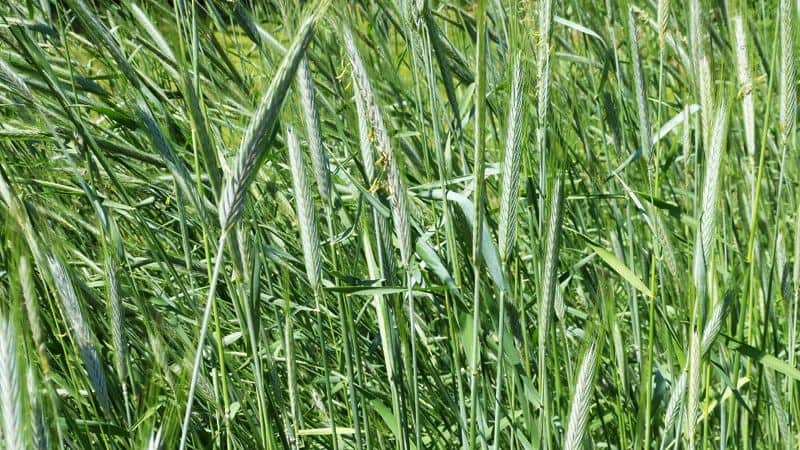We have some avid gardeners asking us this question, “Can you plant winter rye in the spring?”
The name suggests that it should withstand the cold weather. But is it possible to plant this crop after winter?
If you are looking to boost the health of your garden with this cover crop, keep reading. We will lay out the facts to you as to when the right time to plant it, how to help it thrive, and other insider tips every gardener needs to know!

Planting Winter Rye – When Is The Best Time?
Your garden needs a cover crop to thrive. And one of the best cover crops to consider planting is winter rye.
This cereal grain is usually best planted in the cooler season, specifically fall. You can plant it in your vegetable garden, which can then improve soil quality.
What’s great about winter rye and other cereal grains is that they grow quite fast. They sprout from seed and then produce a thick mat. This is what blankets your soil and smother your weeds that are ideal for the cool months.
When you have this dense ground cover, it can help to prevent nutrient loss and soil erosion during the winter.
Additionally, it is worth noting that winter rye has deep roots. As it grows quickly, this crop sends in its roots to your soil. Thus, it helps to break up heavy soils and even clay naturally.
Planting winter rye is excellent for enriching the nutrients in your soil. It absorbs minerals and nitrogen as far as possible on the soil’s surface. Then, these nutrients are brought up into your crops’ leaf blades.
Once it is time to cut down this cereal grain and till the leaves underneath, your soil becomes richer and packed with nutrients.
The Best Planting Dates For Winter Rye
The ideal time to plant winter rye varies from one region to another.
But specifically, this cover crop is quite hardy. So, it can survive even in the latter months of fall.
One thing you need to keep in mind, though, when planting winter rye – you only need to do it when all your other crops are out.
August up to October are good months to plant winter rye. But this depends on where exactly you are planting it.
For warmer regions including zone 6, we recommend that you plant this crop later in the fall. But if you live in a very cold region, then you should get it started early in the fall months.
Once you have planted the seeds, they will soon begin to sprout and then grow. They often grow fast in warmer regions, which is why you need to move this crop a few times.
In case the hard freeze comes, this crop remains dormant up until springtime. Then, it should resume its growth. Hence, you will need to cut off this crop many times. Either that, or you wait for it to reach a foot tall before you cut in down with a scythe, lawn mower, or other tools, depending on its height.
When you have cut it in spring, you can till the cover crops into the soil. This way, you are adding ample organic matter and nutrients to it. No wonder cover crops are coined as “green manures” – they keep your soil rich and fertile!
Winter Rye For A Healthy Vegetable Garden
In addition to using winter rye as fertilizer, you can also use it as loose mulch.
After cutting it off, the stems are perfect as loose mulch that your vegetable garden can benefit from.
However, if your goal is to till it under, be sure to cut it down 3 weeks prior to planting a new crop in your garden. Then, allow the leaves to simply dry down, which makes it much easier for you to mix them into your soil.
The stems can be quite tough, so a large and heavy-duty tiller can help to get the job done. Next, you will need to wait for a couple of weeks before you plant. By doing so, you can give time for the organic matter to decompose and do their job of improving soil quality.
Winter Rye In The Spring – Does It Work?
Ideally, winter rye is a crop that is good to plant in a cooler area.
If the temperature is about 33 degrees Fahrenheit, the seeds should be able to germinate. It can also grow quickly and can then tolerate up to -30 degrees Fahrenheit.
You should be able to plant it in the spring just to serve as an early forage or a companion crop. However, it is unlikely to produce any grain at all because of limited vernalization.
During springtime, your winter rye will not grow quite tall. The growth is also quite modest since it is not the most desirable time of the year to plant this crop.
Hence, we suggest that you plant it during the fall. It should be planted up to 8 weeks earlier to boost its growth. Then sow with a hairy vetch, which helps to establish the vetch type.

Additional Tips for Planting Winter Rye
It is always a great idea to plant winter rye in your garden. This type of cover crop is very cheap and available in various places.
Growing it is quick and easy, and the same goes when it is time for tilling it under. As it creates dry matter during the spring, this helps to nurture and improve the soil quality.
To plant it successfully, you should choose a loamy soil that is well-draining. Even sandy and heavy clay will do, too. But be sure that you maintain a desirable pH level of 5.0 up to 7.0. Even if the range is in the 4.5 or 8.0, it should still be able to grow.
When planted in the late fall, winter rye should grow well. You need to use a higher seeding rate, which protects your crops during soil erosion in the winter. Then, rake your garden as smoothly as possible and sow 2 lbs of winter rye seeds per 100 square meters. Cover the seed with soil by raking lightly.
Avoid sowing rye seeds that are over 2 inches in depth.
Since rye is not fussy at all to plant, you don’t even need to bother putting extra fertilizer to it. This crop absorbs nitrogen and other minerals in your residual soil. And once winter is over and the days become longer, the vegetative growth of your winter rye goes into a halt. You will also notice a few flowers coming out.
However, once you let the rye produce flowers, it can slow down the decomposition process. This is why you are better off cutting it back and then mixed into the soil once it reaches a foot or half a foot tall.
Terminating this crop during spring time can be an issue for many gardeners. Since rye pulls in nitrogen and keeps it in the stem, the release of this nutrient happens slowly during the spring. Hence, if you plant it in the spring, killing the rye could be detrimental to the next crop you wish to plant because it utilizes moisture in your soil.
With this in mind, terminating it prior to maturity is a good idea. You should also stick to the ideal planting season for winter rye, which are in the early or later spring.
Bottom Line
Planting winter rye is a great idea to improve soil quality.
But you have to time it right once you are ready to plant. Otherwise, the returns on your time and money investment may be not as good.
We hope we were able to address your concerns about winter rye and how to plant it. Now, you can go forth and plant this cover crop at the right time and make great use of it in your vegetable garden.
With this in mind, terminating it prior to maturity is a good idea. You should also stick to the ideal planting season for winter rye, which are in the early or later spring.????
That is true, I agree with terminating winter rye before maturity, and/or terminating it during the spring season before planting the next crop. The ideal planting season for winter rye would vary, depending on your location. In USDA zones 6 or warmer, it’s best to plant them during the late fall, while in colder zones, it should be planted early fall.
You never answered the question “Can You Plant Winter Rye In The Spring?”
You obviously do not know.
If you search you will find 1 correct answer, the rest are just bots that dodge around the question. Epic Fail